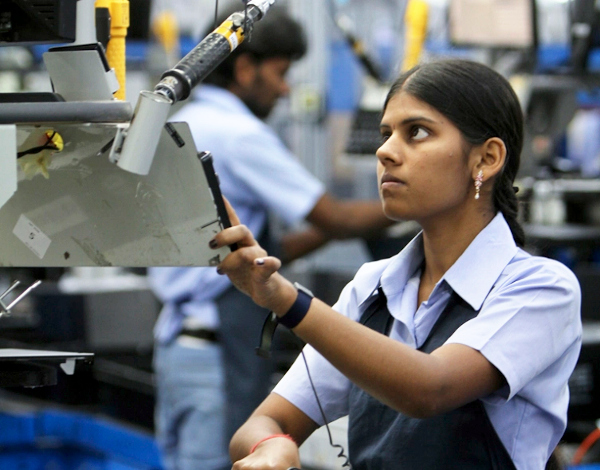NEW DELHI : India’s factory output rose to a seven-month high of 4.5% in February, before the government imposed a nationwide lockdown in March that has crippled normal economic activity.
Mining and manufacturing grew at 10% and 3.2%, respectively during the month, while electricity generation rose 8.1%. Data released earlier showed India’s eight infrastructure sectors which contribute over 40% of the Index of Industrial Production (IIP) touched an 11-month high of 5.5% in February.
Poor show by leading indicators for March such as manufacturing Purchasing Managers’ Index (PMI), goods and services tax collections and auto sales confirm that the coronavirus outbreak has upended an incipient recovery in the Indian economy.
During February, contraction in capital goods (-9.7%) and consumer durables (-6.4%) further deepened, signalling investment intentions and consumer demand were sluggish even prior to the lockdown.
The items that registered the steepest rise in February include active pharmaceutical ingredients; fragrances and oil essentials; mild steel slabs; ship building parts; and steel pipes and tubes, while the items that dragged down growth the most include soya bean oil; bars and rods of alloy and stainless steel; electric and non-electric meters; printed circuit boards; and axle.
Aditi Nayar, principal economist at Icra Ratings said factory output recorded a broad-based and sharper-than-expected pickup in February, suggesting that some parts of the economy were on the path of a gradual revival prior to the escalation of the covid-19 outbreak. “However, the solace provided by this is hollow, as social distancing and lockdowns are likely to result in a considerable industrial contraction in March, particularly in manufacturing and electricity, which would likely intensify in April,” she added.
At a meeting with Opposition leaders on Tuesday, Prime Minister Narendra Modi had hinted that the 21-day lockdown may be extended further, given the rising number of covid-19 cases in the country.
Rajani Sinha, chief economist at property consultancy Knight Frank India said even after the lockdown is lifted, demand for consumer discretionary items will take time to recover given the poor consumer sentiments in the midst of job losses and pay cuts. “Capital goods demand will also remain weak as businesses will be wary of capex in these uncertain times,” she added.
Most economists now expect the economy to miss the 5% gross domestic product (GDP) growth forecast by National Statistical Organization for FY20. Goldman Sachs on Wednesday projected the bleakest FY21 growth forecast for India at 1.6%, holding that the spread of the covid-19, announcements of the nationwide shutdown, social distancing measures and fears among consumers and businesses may lead to a significant contraction in economic activity. Fitch Ratings and Icra have pegged India’s FY21 growth at 2% while S&P and Moody’s have projected a growth of 3.5% and 2.5% respectively.
Finance minister Nirmala Sitharaman has rolled out a ₹1.7 trillion relief package, in an attempt to limit the economic damage caused by the pandemic and tackle loss of livelihood of millions of poor hit by the unprecedented lockdown.
Source:LIveMint
Image Courtesy: Time
You may also like
-
Trade Connect E-platform For Exports Is Single Window, Fast, Accessible And Transformational: Shri Piyush Goyal
-
Dot Simplifies Approval Processes For Telecom Licenses And Wireless Equipment
-
Coal Production and Supply Trends on Positive Trajectory
-
Union Minister To Release Booklets On Promotion Of Indigenous Species & Conservation Of States Fishes
-
2nd India-Japan Finance Dialogue held in Tokyo on 6th September, 2024
